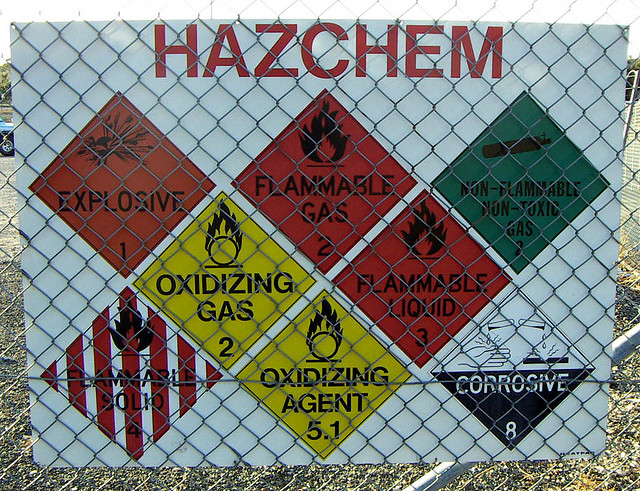Health care and social service workers suffer workplace violence at much higher rates than in most other sectors, because of the higher risk from their patients and clients. In response, worker protection laws and regulations have begun to require workplace violence prevention in these sectors. The California Occupational Safety and Health Standards Board (OSHSB) just adopted a new regulation, implementing 2014 legislation that expands state requirements for hospital security plans, to include specified workplace violence prevention programs. Compliance begins in phases during 2017-2018, and will be administered by the Division of Occupational Safety and Health (Cal/OSHA)).
Read MoreAudit, Compliance and Risk Blog
California Adopts Workplace Violence Prevention Requirements For Health Care Facilities
Posted by Jon Elliott on Thu, Feb 09, 2017
Tags: Employer Best Practices, Health & Safety, OSHA, Employee Rights, Workplace violence
Creating a Security-Conscious Community to Prevent Violent Acts in the Workplace
Posted by W. Barry Nixon on Tue, Nov 22, 2016
The time has come to shift our thinking about how to prevent violent attacks in the workplace. Business as usual will not keep our workplaces safe from terrorist attacks.
Read MoreTags: Employer Best Practices, Employee Rights, Workplace violence
The reality is that suicide rates in the U.S. have gone up considerably in recent years, claiming an average of 36,000 lives annually.1 While most suicides take place at, or near, a person’s home, suicide on the job is also increasing according to federal researchers. The Bureau of Labor Statistics reported that workplace suicides rose to 282 in 2013 reaching the highest level since the numbers have been reported by the occupational fatality census. In 2014, the suicide rate went down slightly to 271, which is the second highest level since the records have been kept. The annual average number of suicide deaths that occurred at work during the time period 2003 – 2014 is 237. Between 2003 and 2014 there were a total of 2,848 suicide deaths that occurred at work.2 The rise in suicide rates at work is even more significant when taken in the context that overall homicides in the workplace have been steadily decreasing since the mid-nineties.
Read MoreTags: Employer Best Practices, Employee Rights, Workplace violence
California Proposes Workplace Violence Prevention Requirements For Healthcare Facilities
Posted by Jon Elliott on Tue, Feb 09, 2016
Employees in the health care and social service sectors suffer workplace violence at much higher rates than in most other sectors, largely because of the higher risk from their patients and clients. In response to these risks, worker protection agencies and professional organizations have developed guidelines for workplace violence prevention in these sectors. Increasingly, worker protection laws and regulations are being revised to require these activities. Most recently, in December 2015 California has proposed to expand state requirements for security plans to include explicit workplace violence prevention programs.
Existing Requirements For Security Plans
Tags: Employer Best Practices, Health & Safety, OSHA, Employee Rights, California Legislation, EHS, Workplace violence
Live Shooting Tragedy at WDBJ-TV: Why Reference Checking Matters
Posted by W. Barry Nixon on Mon, Dec 14, 2015
It’s exceedingly difficult to predict workplace violence, and there is no easy solution to stop it altogether, however, reference checking is a preventative step that employers can take to reduce the risk. I would add that, in my professional opinion, many workplace violence incidents could be prevented if employers took the necessary precautions before an incident actually unfolded.
Read MoreTags: Employer Best Practices, Health & Safety, Employee Rights, Workplace violence
Your Employee Has A Drug Or Alcohol Problem—Now What?
Posted by STP Editorial Team on Tue, Nov 10, 2015
A manager reports to you that one of your workers, Joe, has admitted to a problem with alcohol. Or perhaps there’s an accident in the workplace and the ensuing investigation reveals that Jane is a regular drug user. Or John arrives at the office, once again unfit to do his job because he’s “under the influence.”
Read MoreTags: Employer Best Practices, Health & Safety, Employee Rights, Workplace violence, Canadian
Federal laws prohibit employers from basing employment decisions on a variety of factors, including “sex.” This term is not defined, leaving its interpretation to change and expand with social changes and court decisions. The central entity creating and applying these interpretations is the Equal Employment Opportunity Commission (EEOC), which administers and enforces Title VII of the Civil Rights Act of 1964 and a variety of subsequent laws. On July 15, EEOC reaffirmed its present interpretation, in an enforcement decision in which the plaintiff claimed he was denied access to a promotion because he’s gay (Baldwin v. Foxx). The EEOC’s order includes a clear summary of the agency’s approach to sex discrimination cases:
Tags: Corporate Governance, Business & Legal, Employer Best Practices, Employee Rights, Workplace violence, EEOC, NLRB
When the majority of people hear the word “violence” they think of physical assault. Of course we know that acts of violence go beyond the physical to include any act in which a person is abused, threatened, intimidated, or assaulted. Every year almost two million U.S. workers report having been victimized by acts of workplace violence, yet many cases still go unreported. Workplace violence is a much bigger problem than many people realize, and it can happen anywhere at any time, and everyone is at risk.
Tags: Business & Legal, Employer Best Practices, Health & Safety, Employee Rights, Workplace violence, criminal background checks
Congress Updates Chemical Facility Anti-Terrorism Standards
Posted by Jon Elliott on Mon, Feb 02, 2015
In 2007, Congress added a provision to the Department of Homeland Security (DHS) budget, directing DHS to create a program to identify chemicals that might be tempting targets for terrorists, and to require facility that handle sufficiently large quantities of these chemicals of interest to establish security programs subject to DHS oversight (“Section 550”). DHS responded to Section 550 by issuing Chemical Facility Anti-terrorism Standards (CFATS) rules, requiring compliance to begin in 2008.
Tags: Corporate Governance, Business & Legal, Employer Best Practices, Health & Safety, Environmental risks, Environmental, Hazcom, Workplace violence
Reconsidering External Threats From Terrorists and Other Criminals
Posted by Jon Elliott on Tue, Oct 28, 2014
Although most “workplace violence” incidents are low-level psychological or physical altercations between co-workers, Canadians have just been tragically reminded of the dangers of murders by interlopers. Government buildings are the likeliest targets for terrorism, and financial and retail buildings the likeliest targets for non-political criminals, but all workplaces face at least some of these most severe risks. There’s no way to eliminate these risks, but commonsense workplace security measures can reduce them. This note discusses approaches to evaluating and reinforcing security against external threats – which are important subsets of broader workplace violence prevention efforts.
Tags: Corporate Governance, Business & Legal, Employer Best Practices, Health & Safety, Employee Rights, Workplace violence










